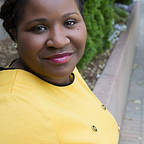Convention 101
Every four years, the Democratic Party comes together to officially nominate our candidates for the offices of president and vice president of the United States. The 2016 Convention will be held July 25th — 28th in Philadelphia, Pennsylvania. As we prepare for an event that is sure to be the most inclusive, diverse, and innovative in recent memory, we get two frequent questions: 1. Why is there a convention? 2. What happens at the convention?
Why do we have a Convention?
The first Democratic National Convention was held in 1832; a three-day event hosted in Baltimore, Maryland.
The purpose of the Convention is to formally select the Democratic Party’s nominee for president and vice president. The Democratic Party also adopts its National Platform. The platform is an official statement of the Party’s position on a number of issues. It represents the ideas and beliefs that govern our party as a whole. A bit of history: In 1840 the Democratic Party adopted the first-ever platform by a political party.
Check out the 2012 Party Platform here.
What happens at the Convention?
The 2016 Convention will convene on July 25th which will begin a four-day meeting and celebration of what the Democratic Party has accomplished and what we look forward to achieving in the future. The event concludes with the acceptance speech by the Party’s presidential nominee.
In the days between, Convention delegates, alternates and members of the party conduct official party business including debate and discussion of the proposed National Platform. Though no Convention Hall schedule has been set for Philadelphia, attendees and viewers can expect the first evening to be a formal call to order and the adoption of the rules that will govern this year’s Convention. Followed by an official kick off of the Party’s formal presidential nominating process with nominating and seconding speeches for presidential candidates being given. A memorable feature of past Conventions is the alphabetical roll call of states and territories by the Convention Secretary.
And then there is the final day, the nomination of the vice presidential candidate. The Convention’s official business concludes with the acceptance speech of the Democratic Party’s presidential nominee.
This year, we’ll be deploying unprecedented resources into technology, innovation and social media to make it possible for more people than ever — outside of the Convention hall — to participate and engage in this historic event.
A few highlights from past conventions:
Every Convention is historic in its own way but here are just a few highlights from past Conventions that have paved the way to Philadelphia in 2016.
Chicago, 1932: Upon accepting the nomination for president, Franklin Roosevelt promised “a new deal for the American people” as the country faced the Great Depression.
Philadelphia, 1948: As President Harry Truman accepted the nomination, he urged the Democratic Party to “get out of the shadow of states’ rights and walk forthrightly into the bright sunshine of human rights” as the Democratic Party adopted a strong civil rights plank as part of the National Platform.
Atlantic City, 1964: During the Convention of 1964, Fannie Lou Hamer burst onto the national stage when the Convention Credentials Committee refused to seat her delegation — the Mississippi Freedom Democratic Party. This brought necessary attention to the challenges facing African Americans in Mississippi and their voting rights. The events of the 1964 led the Democratic Party to adopt new rules demanding equality of representation from state delegations to the national Convention.
Miami Beach, 1972: In 1972, Shirley Chisholm became the first black candidate to run for president from a major political party[1]. She was also the first woman ever to run for the Democratic Party’s presidential nomination, an effort that continued until the Convention in Miami Beach, Florida.
San Francisco, 1984: New York State Representative, Geraldine Ferraro became the first female vice presidential candidate from a major American political party.
Denver, 2008: The Democratic Party nominates then Senator Barack Obama for the office of president. He would go on to become the first African American President of the United States.
Still curious about the Democratic National Convention? Feel free to tweet us at @DemConvention.
[1]At the 1968 Convention, Julian Bond was technically the first African American to have his name entered for nomination for the position of Vice President. He declined because at 28 years of age he was too young to serve as vice president.
